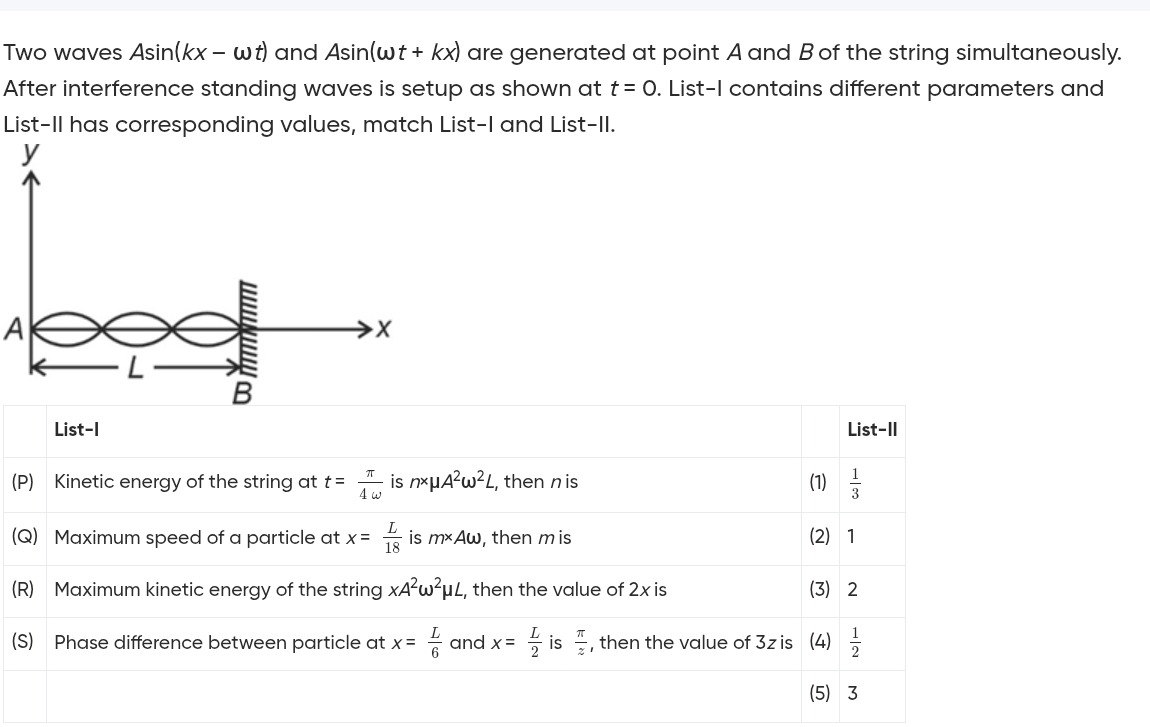Question
Question: Two waves $Asin(kx – \omega t)$ and $Asin(\omega t + kx)$ are generated at point $A$ and $B$ of the ...
Two waves Asin(kx–ωt) and Asin(ωt+kx) are generated at point A and B of the string simultaneously. After interference standing waves is setup as shown at t=0. List-l contains different parameters and List-Il has corresponding values, match List-l and List-II.

Kinetic energy of the string at t=4ωπ is n×μA2ω2L, then n is
Maximum speed of a particle at x=18L is m×Aω, then m is
Maximum kinetic energy of the string xA2ω2μL, then the value of 2x is
Phase difference between particle at x=6L and x=2L is zπ, then the value of 3z is
31
1
2
21
3
P-4, Q-2, R-3, S-5
Solution
Explanation of the solution:
-
Determine the wave number k based on the standing wave pattern shown in the figure. Since A is an antinode, B is a node, and there are 3 loops between A and B, the length of the string is L=5λ/4, which gives k=5π/(2L). The standing wave equation is y(x,t)=2Acos(kx)cos(ωt).
-
For (P), calculate the kinetic energy of the string at t=π/(4ω) using the formula K=∫0L21μ(∂t∂y)2dx. The result is K=21μA2ω2L, so n=1/2.
-
For (Q), calculate the maximum speed of a particle at x=L/18, which is vy,max(x)=2Aω∣cos(kx)∣. At x=L/18, kx=5π/36. The value of m=2∣cos(5π/36)∣≈1.81. Assuming the intended value is 1 from the options, m=1.
-
For (R), calculate the maximum kinetic energy of the string, which occurs when sin2(ωt)=1. Kmax=μA2ω2L. Given Kmax=xA2ω2μL, so x=1. The value of 2x=2.
-
For (S), determine the phase difference between particles at x=L/6 and x=L/2. The phase of oscillation depends on the sign of cos(kx). At x=L/6, kx=5π/12, cos(5π/12)>0. At x=L/2, kx=5π/4, cos(5π/4)<0. Since the signs are opposite, the phase difference is π. Given as π/z, so z=1. The value of 3z=3.
-
Match the calculated values with the options in List-II. P-(4), R-(3), S-(5). Based on the provided single choice answer format, Q must match with (2).
The final answer is P−4,Q−2,R−3,S−5.
